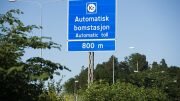Falls are the most commonly reported work accident, and being struck by an object comes second.
Of the 24 000 accidents at work reported in 2015, 45 per cent led to absence from work of more than three days. In total, 40 fatal accidents were reported in 2015.
For the first time, Statistics Norway is releasing statistics on accidents at work by type of accident, as well as absolute numbers for accidents at work and the rate of accidents per 1 000 employees. Fatal accidents at work are reported as absolute numbers.
Exposure to physical violence in health and social services and education
The three most commonly reported work accidents are ‘falls’, ‘being struck by an object’ and ‘being cut by a sharp object’, when disregarding the category ‘other’ and cases where the type of accident is unknown. The other and unknown categories combined constitute 40 per cent of the accidents.
In health and social services, which include health and care services and mental health care, ‘physical violence’ is reported nearly as frequently as ‘falls’. In total, 70 per cent of ‘physical violence’ reported in 2015 was by persons working in health and social services.
‘Falls’ are also most frequently reported in education, but ‘physical violence’ constitutes a significant share of accidents; 16 per cent of acts of violence were reported by persons working in education.
In manufacturing, ‘being struck by an object’ was the most common work accident followed by ‘falls’ and ‘being cut by a sharp object’.
Electricity, water supply and waste management report most accidents per 1 000 employees
In 2015, five industry groups reported more than 5.5 accidents per 1 000 employees that led to absence from work of more than three days (long-term absence). The five industries are Electricity, water supply and waste management, Agriculture forestry and fishing, Transportation and storage, Construction and Manufacturing. For all industries there were 3.9 work accidents per 1 000 employees that led to long-term absence in 2015.
Electricity, water supply and waste management also reported most accidents that led to absence of less than four days, with 8.6 accidents per 1 000 employees. Three other industries reported more than 7 accidents per 1 000 employees that led to short-term absence from work; education, health and social services and manufacturing. The average for all industries was 5 accidents per 1 000 employees for accidents at work that led to absence of less than four days.
40 fatal accidents in total
A total report of 40 fatal accidents in 2015 is the lowest figure during the period from 2000 and onwards. In 2006, 42 reports were made and 47 in 2012. A common characteristic between these three years is the small number of registered cases from both the Labour Inspection Authority and the Norwegian Maritime Authority.
The large gender disparity still holds true, with 38 fatal accidents for men and 2 for women in 2015. This may be seen in relation to the gender divide in the Norwegian labour market. In industries such as Agriculture, forestry and fishing, Construction and Manufacturing, men are in the majority. Fatal accidents are relatively more common in these industries than in industries where the gender divide favours women.
Source: SSB / Norway Today



